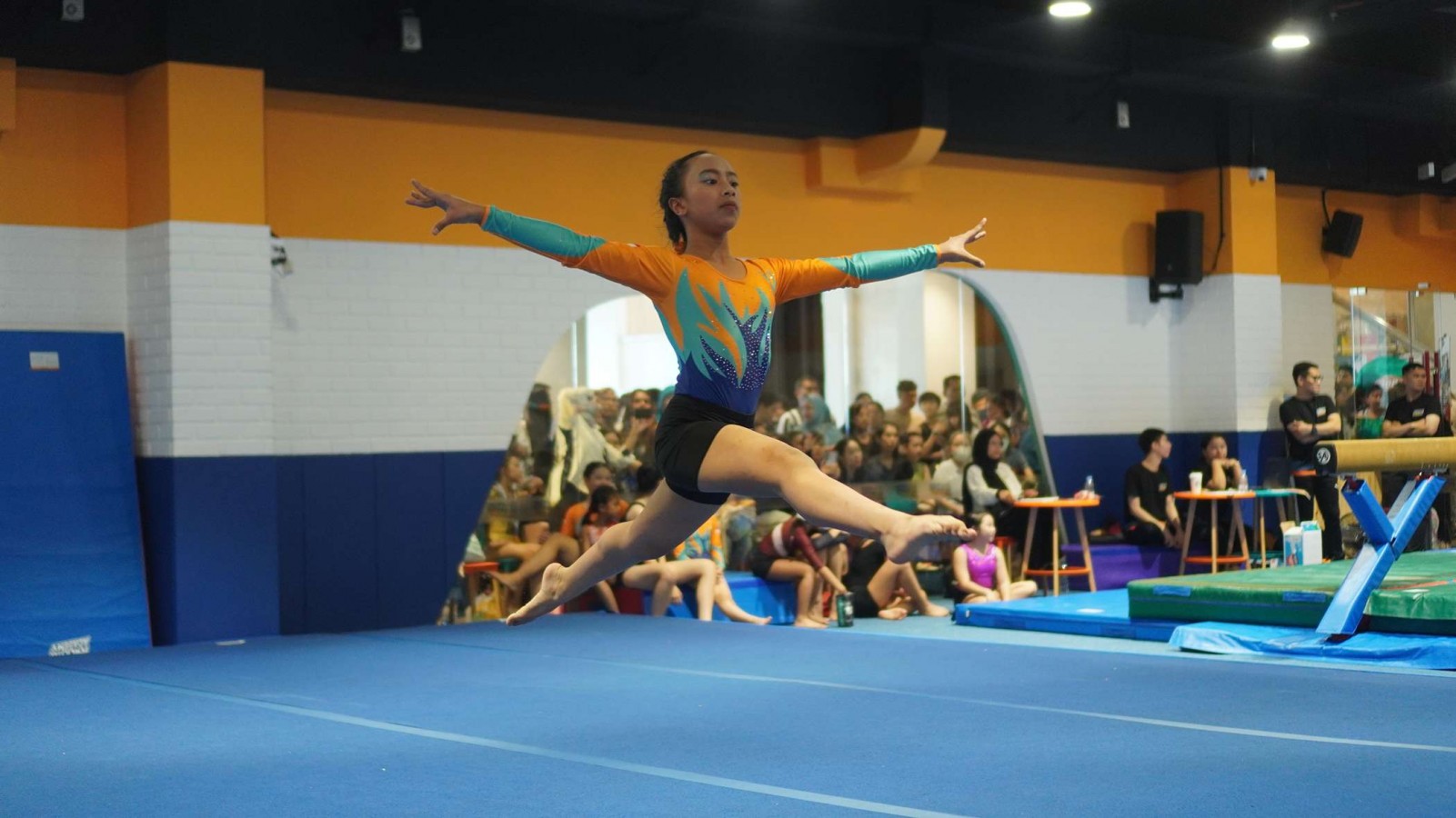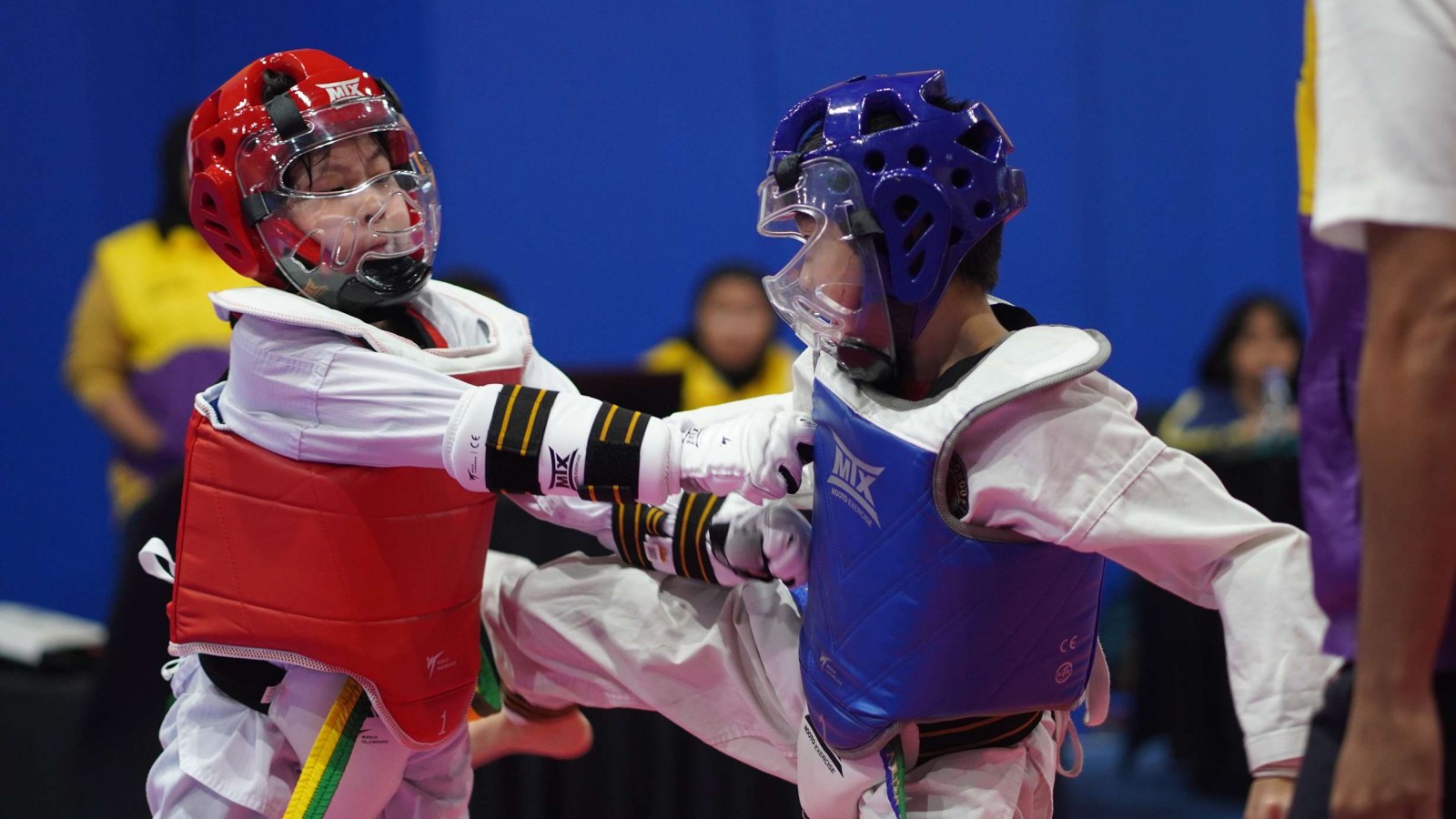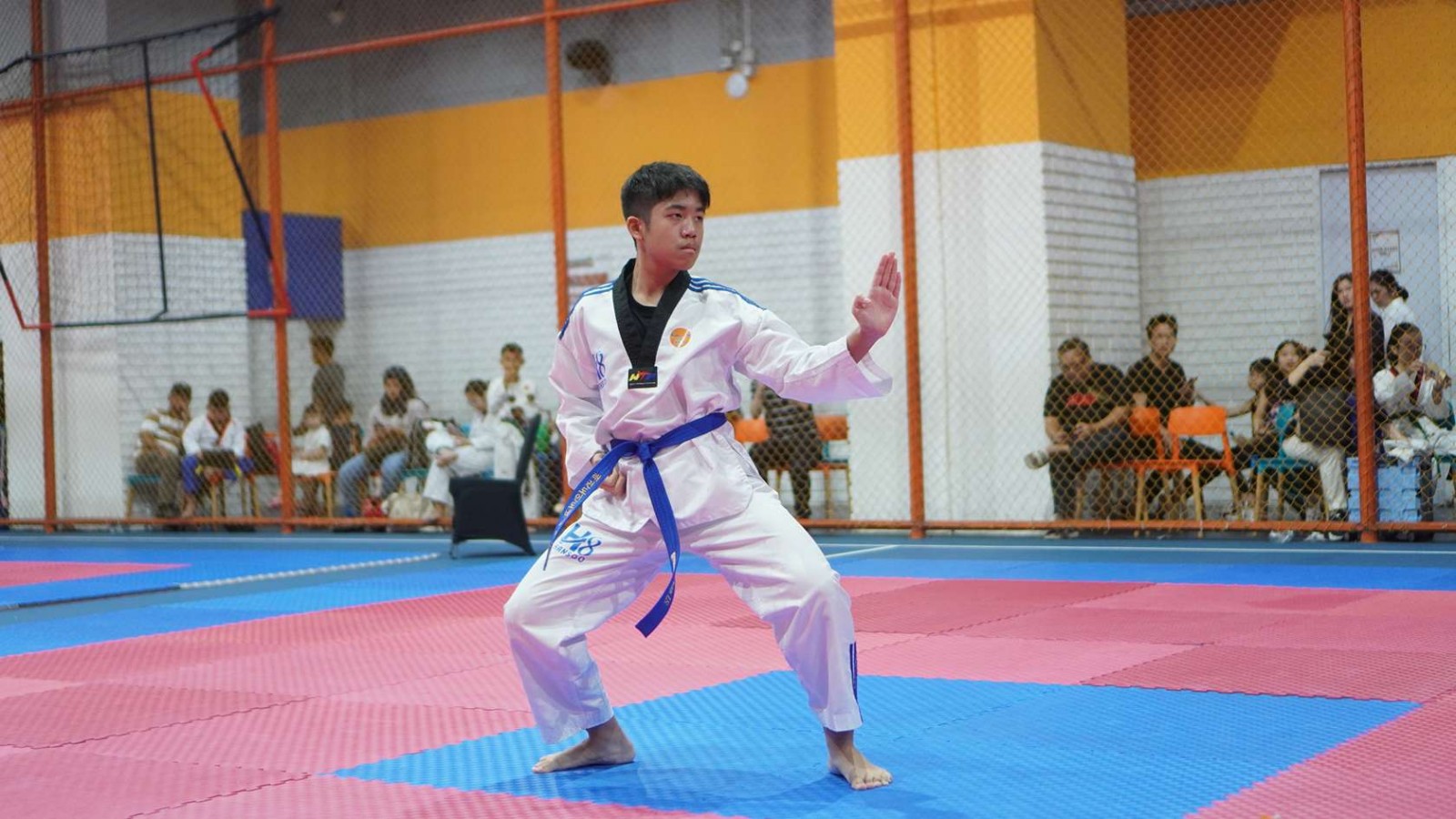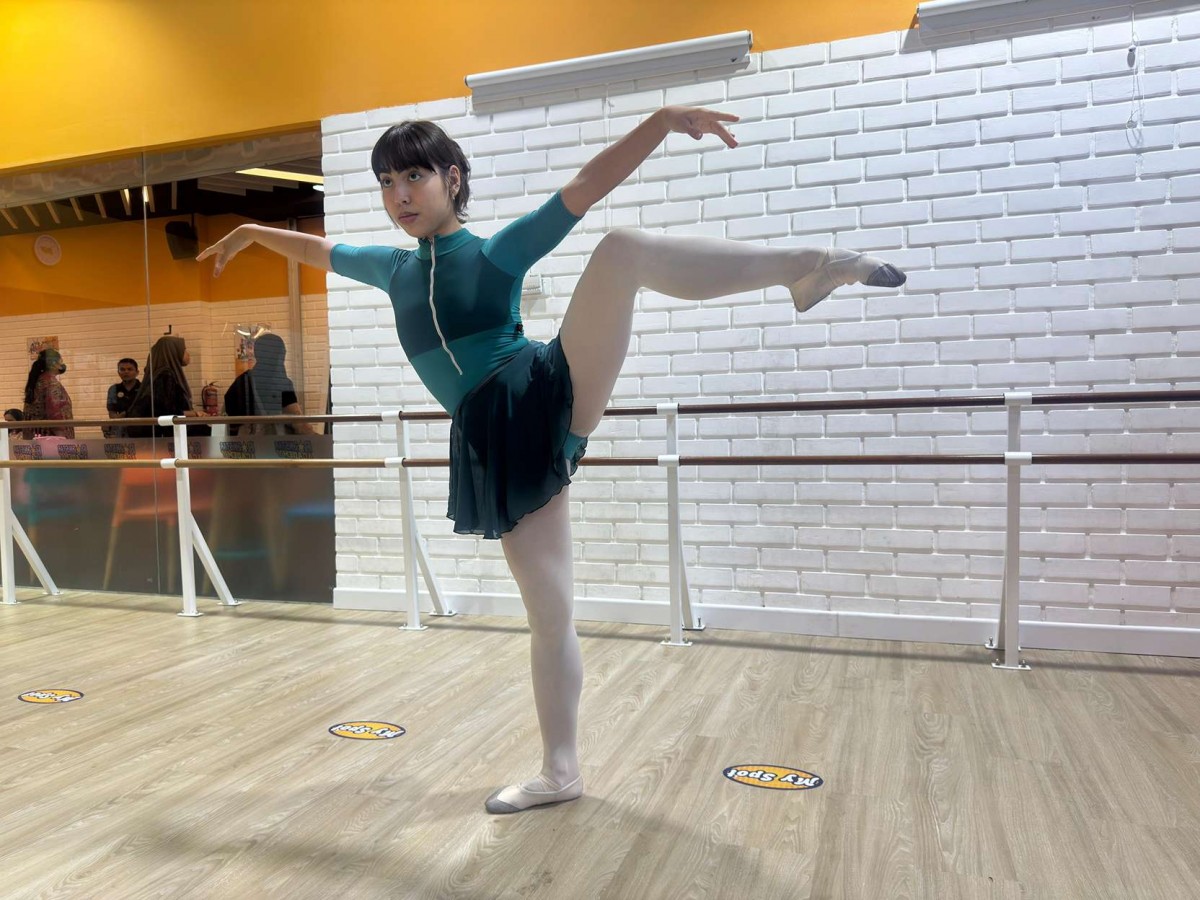Split Leap in Gymnastics: Drills and Tips To Improve It

The split leap is one of the most elegant moves in gymnastics, showcasing flexibility, strength, and control. Performing a flawless split leap requires a combination of muscle engagement, technique, and practice.
This article will guide you through the correct technique for doing a split leap, the muscles involved, drills to help you improve, and essential tips to master it. Let’s leap right in!
What Is a Split Leap?
A split leap is a gymnastic leap where the gymnast pushes off from one foot, extends both legs into a full split mid-air, and lands gracefully.
It is one of the compulsory jumps in gymnastics that gymnasts should be aware of.This move is often seen in floor routines and on the balance beam, requiring significant control to maintain balance and a full split position during the leap.
Muscles Needed for a Split Leap
A successful split leap requires strength and flexibility in several key muscle groups, such as:
A. Hip Flexors
These muscles allow the front leg to lift in the leap, contributing to the height and extension of the split.
B. Hamstrings and Quadriceps
The hamstrings (at the back of the thigh) and quadriceps (at the front of the thigh) are essential for achieving the split and maintaining leg alignment.
C.Glutes
Strong glutes help support the lift and control of the legs during the leap.
D. Core Muscles
A stable core allows you to keep your torso upright, preventing unnecessary arching or tilting while airborne.
E. Calves and Ankles
The calves provide the initial push-off power, while strong ankles help control the landing.
How to Do a Split Leap Correctly
To perform a split leap correctly, follow these steps:
1. Starting Position
Stand tall with your arms relaxed at your sides, and feet together. Take a deep breath and focus on your balance.
2. Take-Off
Start with a small run or chasse (a slide forward) to gain momentum. Push off from one foot (usually the dominant one) while lifting your arms for balance and height.
3. Splitting the Legs
As you leap into the air, split your legs as wide as you can, aiming for a straight 180-degree line. Keep your legs straight, toes pointed, and body upright. Avoid bending the knees or arching your back.
4. Arm Position
Your arms should be raised and extended naturally. They can be held to the side in a “T” position or slightly forward, depending on your style and balance.
5. Landing
Land on one foot softly, bending the knee to absorb the impact and maintain balance. Transition smoothly into your next move.
Drills to Master the Split Leap
Mastering the split leap takes practice, and drills are one of the best ways to build the necessary flexibility, strength, and control. Here’s a breakdown of drills that target each part of the movement to help you nail that beautiful, high-flying split leap.
1. Floor Splits
This drill stretches your hamstrings (back of the thigh) and hip flexors (front of the hip), which are key for getting a full split in the air. The more flexible these muscles are, the easier it is to reach a complete split position in your leap.
How to Do It:
- Sit on the floor in a split position with one leg extended forward and the other leg extended behind you.
- Hold this position for 30–60 seconds.
- If you’re new to splits, don’t push too hard; stop where you feel a comfortable stretch.
- Try to keep both legs as straight as possible and your back upright.
2. Knee Raises with Resistance Bands
Knee raises strengthen the muscles in the front of your hips, making it easier to lift your leg to hip height or higher when you leap. This strength is essential for getting the front leg up in the air and reaching a full split.
How to Do It:
- Stand with a resistance band looped around your ankles.
- Lift one leg in front of you to about hip height, keeping it straight, then bring it back down.
- Do 10–12 reps on each leg.
- The band adds resistance, making it harder to lift your leg, which strengthens your hip flexors.
3. Leg Swings
Leg Swings builds dynamic flexibility, which means flexibility that works in movement. Leg swings warm up your hip joints and get your muscles used to the range of motion needed for a split leap.
How to Do It:
- Stand next to a wall or a barre for support.
- Swing one leg forward and backward in a controlled motion, starting with small swings and gradually increasing the range of motion.
- Do about 10 swings on each leg.
4. Jump Squats
Jump squats build explosive power in your legs, helping you jump higher. The higher you can jump, the more time you have in the air to reach a full split position before landing.
How to Do It:
- Stand with your feet hip-width apart.
- Squat down as if you’re sitting back into a chair, then push up explosively, jumping as high as you can.
- Land softly on your feet, bending your knees slightly to absorb the impact.
- Repeat for 10–15 reps.
5. Box Leaps
This drill develops explosive power and control in your legs, which is essential for the take-off in a split leap. Practicing jumps onto a box will also help build confidence in your jumping ability.
How to Do It:
- Stand in front of a low, sturdy box or platform (about knee-height is ideal for beginners).
- Jump onto the box with both feet and then step down.
- Start with 5–10 reps, focusing on landing softly and controlling your movements.
6. Split Jumps
Split jumps let you practice the feeling of a split in the air, helping you get used to extending your legs mid-jump. They’re a great way to work on form and coordination before moving to a full split leap.
How to Do It:
- Start in a standing position.
- Jump and extend your legs into a split in mid-air, similar to a split leap but landing on both feet.
- Keep the split small at first, and focus on form.
- As you get comfortable, try for a wider split in the air.
- Do 5–8 reps.
7. Core Strengthening Drills
A strong core stabilizes your upper body, keeping your torso upright and controlled during the leap. Without a strong core, you might arch your back or lose balance in the air, which can throw off the leap.
Include core exercises like planks, leg raises, and Russian twists in your training routine. Start with a 30-second plank, then try 10–15 reps of leg raises (lying on your back and lifting your legs straight up), and 15–20 Russian twists.
Ready to Execute the Perfect Split Leap?
Mastering a split leap takes practice and dedication, but with the right support, your child can reach new heights. If your child is excited to improve their split leap (and other gymnastics skills), enrolling them in a structured gymnastics program can make all the difference.
Rockstar Academy, known as the best Sports & Performing Arts Academy, offers fantastic gymnastics programs designed to develop athletic skills, confidence, and discipline.
At Rockstar Academy, your child will have the chance to participate in Gymnastics Testing, a structured way to track progress and move up to higher levels. They can even train for national and international competitions, preparing to take on the world!
Plus, our events and competitions such as Gymnastics Elite Championships and RockOlympics provide an amazing opportunity to build skills, learn sportsmanship, and gain a competitive edge.
Our gymnastics program also offers the Dream Team, an exciting elite Competitive Sports Program designed to help boys and girls be their best in sports and in life. With 180 minutes of high-energy training led by professional and experienced instructors, this program is perfect for motivated athletes ready to work hard and chase their dreams.
It’s not just about gymnastics but it’s about growing character, resilience, and valuable life skills that set you up for success in everything you do!
And the best part? Rockstar Academy offers a free trial class! If you’re ready to help your child reach their full potential in gymnastics, be sure to contact Rockstar Academy and give them the support they need to soar!
FAQ
What if I can’t do a full split on the floor yet?
No worries! Keep working on your flexibility with consistent stretching. You can still practice split leaps, even if your split isn’t at 180 degrees yet. Over time, as your flexibility improves, your leaps will too.
How often should I practice split leaps?
Practice leaps about 2-3 times a week, focusing on quality over quantity. Combine them with flexibility and strength drills for the best results.
Can I hurt myself doing split leaps?
Like any gymnastic move, split leaps can cause strain if you’re not prepared. Always warm up, practice good form, and listen to your body to avoid injuries.
How long will it take to perfect my split leap?
The time varies for everyone based on flexibility, strength, and consistency. With regular practice, many gymnasts see improvements within a few months.



